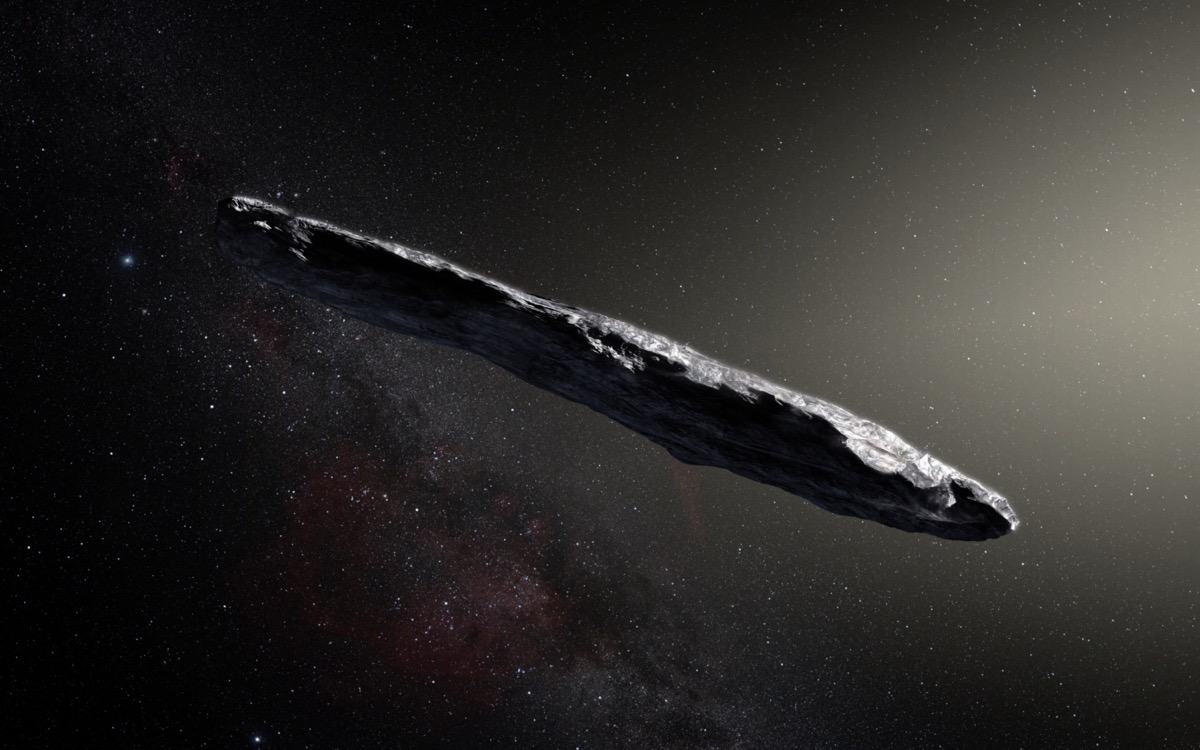
‘Oumuamua: We know more about the mysterious interstellar object seen in 2017
Scientists have revealed that the stellar object dubbed ‘Oumuamua, which was seen in 2017 by a telescope in Hawaii, was indeed a comet.
The extraterrestrial spaceship thesis was rejected. in a published report On Wednesday, March 22 in the scientific journal Nature, scientists established that the interstellar object ‘Oumuamua, first seen in 2017 by a telescope in Hawaii, was in fact a comet.
Roughly 400 meters long and one hundred meters long, “Oumuamua” (which means “scout” in Hawaiian) has raised many questions about its nature, with the scientific community. In fact, the ex-director of the Harvard Astronomy Department, Abraham aka “Avi” Loeb, has largely endorsed the extraterrestrial ship interpretation, in his book “The First Sign of Intelligent Extraterrestrial Life,” published in 2021.
However, three years ago, a team of researchers from the Department of Astronomy at the University of Maryland announced that the first interstellar object to enter our solar system was completely normal. “The extraterrestrial spacecraft hypothesis is amusing, but our analysis suggests that a large number of natural phenomena could explain ‘Oumuamua,” explained Matthew Kenney, co-director of the investigation at the time.
questions about its appearance
Unlike “traditional” comets, Oumuamua did not have a luminous trail consisting of gas and dust. This property naturally provided material for skeptics and defenders of the extraterrestrial ship thesis.
In the scientific journal NatureJennifer Bergner, a chemist at the University of California, Berkeley, who led the recently published work, explains that this lack of a “tail,” or light path, was solely a consequence of the comet’s formation.
“As ‘Oumuamua approached the sun, it released hydrogen, which is still less massive than the carbon monoxide or carbon dioxide ejected in typical comets, and it didn’t have the momentum to release as much dust with it, explaining the lack of a comma or tail,” specifies the study’s author.
‘antic’
Jennifer Bergner also specifies that this “evacuation of hydrogen” makes it possible to explain the strange behavior of a comet, which, once it entered the solar system, deflected its trajectory and exited it.
“We report here that Oumuamua’s acceleration is due to the release of trapped molecular hydrogen that forms from the active treatment of an H2-rich ice body,” reads the recent study’s caption.
“Trapped hydrogen is simply the most general explanation,” says Daryl Seligman, co-author of the report, who works with him at Cornell University (New York State), in order to scientifically translate the acceleration experienced by the comet.

“Incurable web evangelist. Hipster-friendly gamer. Award-winning entrepreneur. Falls down a lot.”
